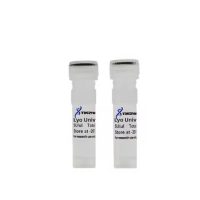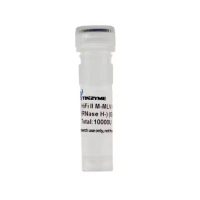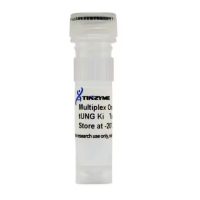
All Script RT Master Mix
2025-01-20
2x Universal Fast SYBR Master Mix
2025-01-20Product Number: RT07
Shipping and Storage
Store at -30 ~ -15 ℃ and transport on dry ice.
Components
| Component | RT07 10KU | RT07 200KU | RT07 2000KU |
| HiFi V M-MLV Reverse Transcriptase (RNase H-)(200U /μL) | 50 μL | 1 mL | 10 mL |
| 5×SuperRT Buffer | 1 mL | 10 mL | 100 mL |
Description
HiFi V M-MLV Reverse Transcriptase (RNase H -) is a reverse transcriptase that recombines and expresses mutated M-MLV genes in E. coli engineering bacteria. This enzyme can catalyze complementary DNA polymerization reactions using RNA or DNA: RNA hybrid chains as templates. The mutated HiFi V M-MLV Reverse Transcriptase (RNase H -) RNase H activity is missing, reducing RNA degradation in reverse transcription reactions and making it easier to obtain full-length cDNA. HiFi V M-MLV Reverse Transcriptase (RNase H -) exhibits excellent reverse transcription activity at 55 ℃ (the enzyme can be used for reverse transcription reaction at up to 60 ℃). For complex RNA structures, increasing the reverse transcription reaction temperature can significantly improve the yield of cDNA. In addition, the mutated HiFi V M-MLV Reverse Transcriptase (RNase H -) has better stability and can synthesize up to 15kb of cDNA. Suitable for the synthesis of first stranded cDNA, RT PCR, RT qPCR, and construction of full-length cDNA libraries.
Unit definition
Using Poly (A) as a template and oligo (dT) as a primer, the enzyme required to catalyze the addition of 1 nmol of dTTP within 10 minutes at 37 ℃ is defined as one active unit (U).
Quality control
200 U of this enzyme reacted with 1µg of 16S, 23S rRNA at 37 ℃ for 1 hour, and the electrophoresis band of the RNA remained unchanged.
Note
- During the operation process, RNase contamination should be avoided to prevent RNA degradation or cross contamination during experiments. It is recommended to perform RNA operations in specialized areas, use specialized instruments and consumables, wear masks and disposable gloves, and frequently change gloves.
- Try to use disposable plastic containers for experiments. If using glassware, a 0.1% DEPC (diethyl pyrocarbonate) aqueous solution should be treated at 37 ℃ for 12 hours and sterilized under high pressure at 120 ℃ for 30 minutes before use. Alternatively, dry heat sterilize the glassware at 180 ℃ for 60 minutes before use. The sterile water used in the experiment should be treated with 0.1% DEPC and then subjected to high-pressure sterilization.
- All reagents in this reagent kit should be gently mixed upside down before use, avoiding foaming as much as possible, and used after brief centrifugation. The enzymes involved should be returned to an environment below -15 ℃ as soon as possible after use to avoid repeated freeze-thaw cycles.
- If the initial amount of RNA is less than 50 ng, it is recommended to add RNA enzyme inhibitors (RNAsin). This reagent kit is not provided. If needed, you can order it separately from our company, item number: RNK3501.




